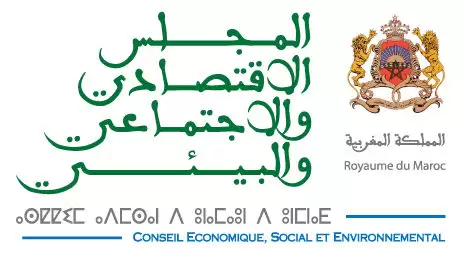
In this study, the CESE offers three strategic recommendations to further advance food safety
A participatory approach was adopted in preparing this report, with input from Council members across the board and data from interviews with relevant key economic, social and cultural actors. The findings presented in this report also build on a review of all relevant legal and regulatory texts, and on inspiring food safety and security experiences.
The report finds that significant progress has been made on food safety and security since 2009 with the adoption of Law 25-08 establishing the country’s National Office of Food Safety (ONSSA), Law 28-07 related to food safety and Law 31-08 enacting measures for consumer protection. Today, the Moroccan food safety system enables the country to supply its products to demanding international markets.
The report points out, nevertheless, that a vast array of national institutions possess no health permit or sanitation certificate. These, the Council explains, are selling on the goods market products that present real, uncontrollable risks to the consumer’s health. In 2018, only 8 meat slaughterhouses had ONSSA approval (i.e. less than 1%). Only 27 poultry slaughterhouses are approved, while over 15,000 are not. Similarly, only 8% of chicken meat comes from rigorously controlled supply chains, out of the 570,000 tons produced in 2018.
Furthermore, while the use of chemical inputs, such as pesticides, in agriculture is essential to ensure maximum crop yield and crop quality, it is not sufficiently regulated under the standards currently in force. As a result, agricultural chemical inputs dangerously impact human health and the environment. They pollute natural resources and disrupt the natural ecosystem.
This situation can be explained by the absence of an inclusive public food safety policy, which leads to a number of shortcomings, including the stakeholder interaction and overlapping roles and responsibilities, the predominance of the informal sector, low consumer expectations and the limited role of consumer organizations.
Recommendations:
In view of the findings of the study, the Council offers the following three strategic recommendations to further advance food safety:
The first recommendation is that the country should be equipped with a public food safety policy.
The second specific recommendation is that the country should reorganize its food safety system and create a National Food Safety Office reporting to the Head of Government and vested with wide control, supervisory and corrective powers. This could involve a radical transformation of ONSSA by providing it with the competences and positioning needed for it to deliver.
The third major recommendation is to separate risk assessment from risk management by establishing an independent scientific risk assessment committee, whose main task would be to deliver scientific advice and ensure independent, impartial and complete food safety information.
Materializing this paradigm shift requires a phased set of roadmap items. The following key measures are suggested:
- Include food safety objectives (FSOs) and results in the program contracts signed between the government and the food industry and make as a necessary condition for the extension of subsidies the compliance with the applicable food safety specifications.
- Improve hygiene and sanitation solutions for the informal sector food markets for its transition to the formal sector.
- Offer incentives (subsidies, tax incentives, interest-free loans, etc.) for small-scale producers to encourage their successful integration into the food supply chain, while encouraging and assisting them in implementing product standardization and certification.
- Control the use of such chemical inputs as fertilizers and pesticides, to reduce risks to the environment and consumer health.
- Significantly develop the possibilities offered by digitization to improve product traceability throughout the entire production chain.
- Guarantee the right to information on products that present a health risk for consumers, in line with Law 31-13 on the right of access to information.
- Implement the National Consumer Protection Fund provided for by Law 31-08.
- Simplify the procedures for consumer protection associations to be recognized as public utility, to speed up their formation into a National Consumer Protection Federation.
- Ease the modalities for delivering authorization to non-public utility consumer protection associations to stand in court, as set out in ministerial decision 895-18.
- Involve consumer protection associations in the mediation process between the consumer and the supplier in resolving disputes about goods and services.
- Transform consumers into “active actors” by empowering them towards a critical consumer mindset, to become agents of change themselves.
